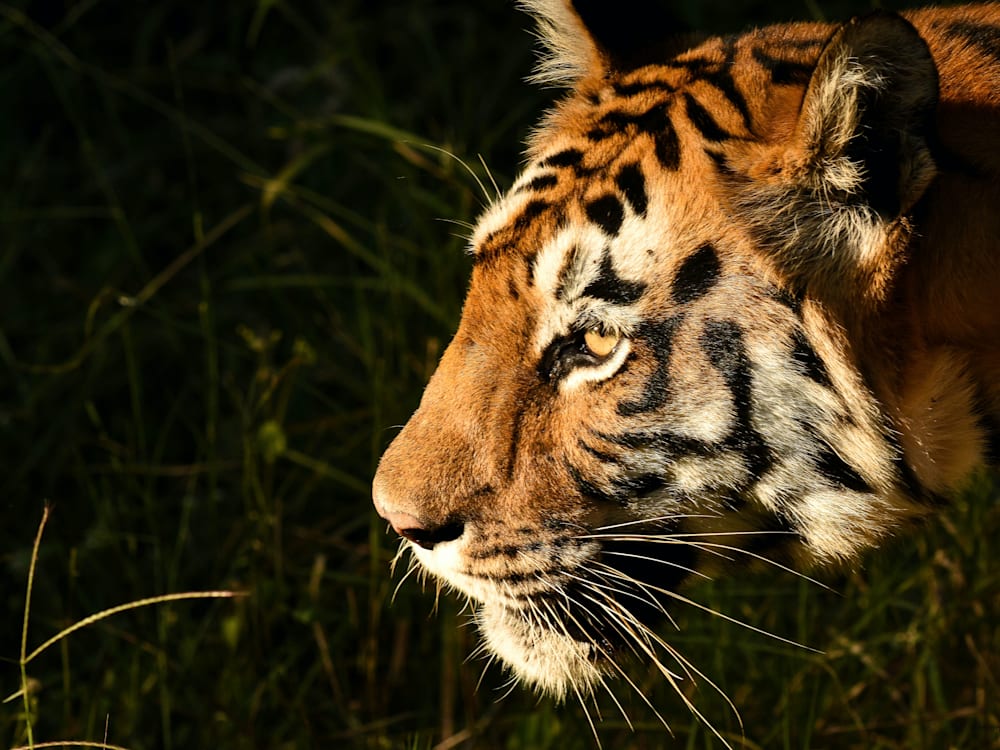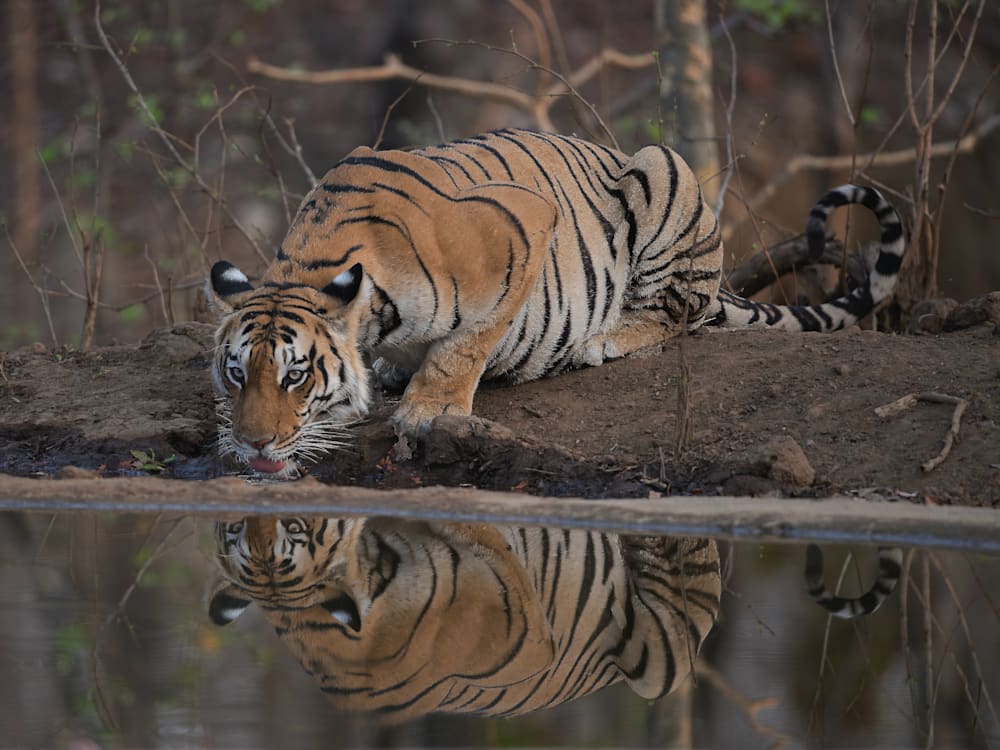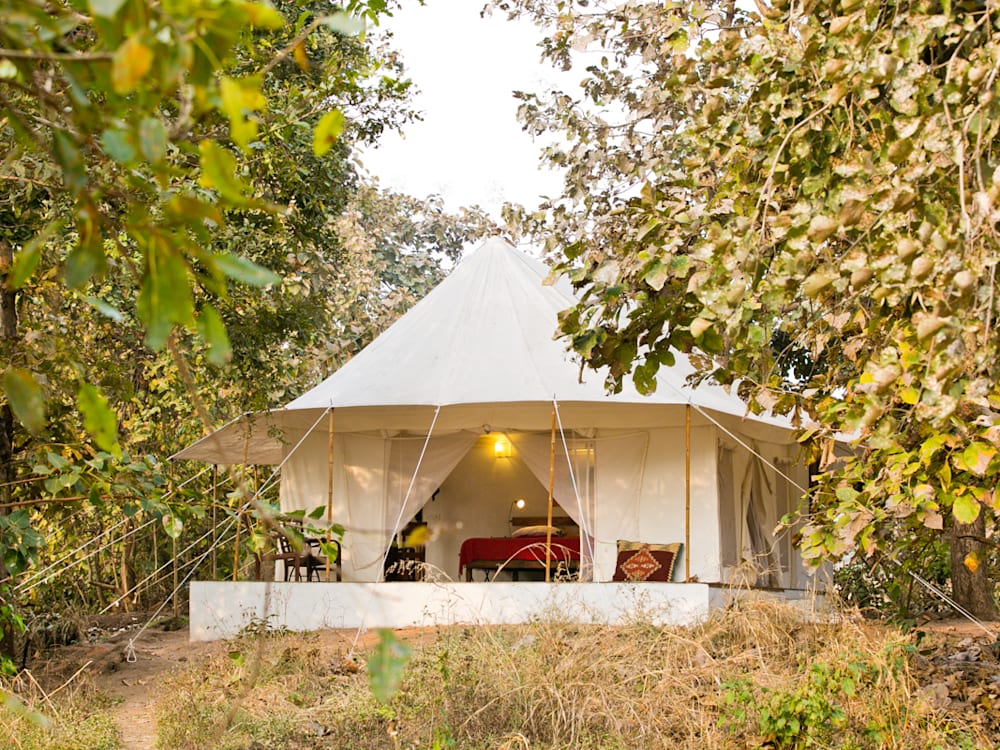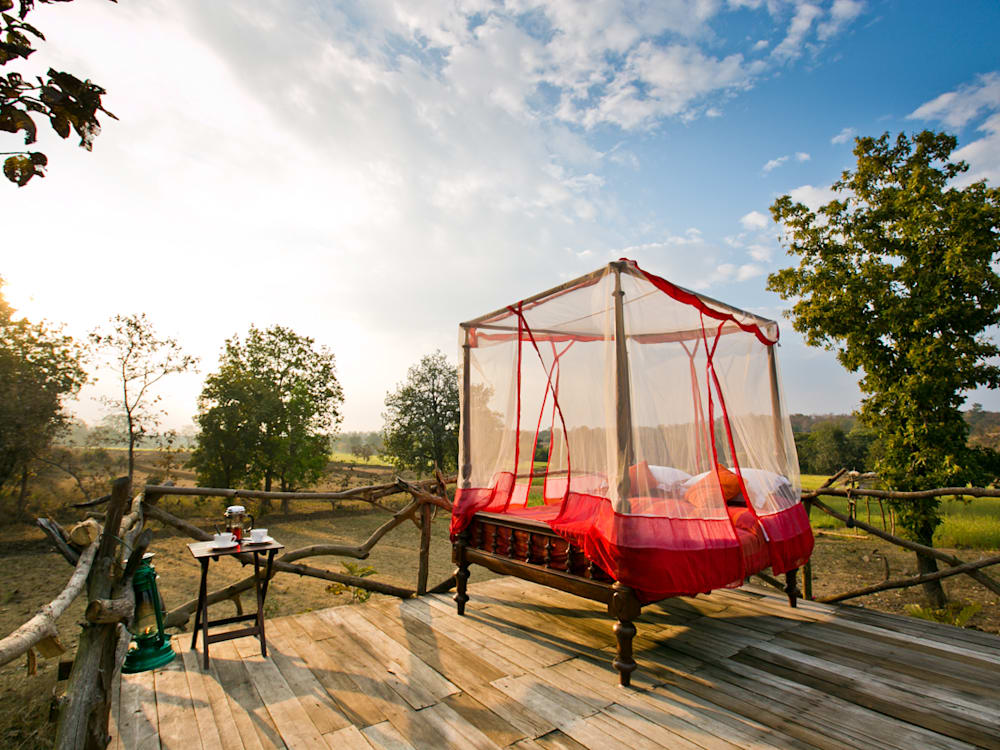Gauzy morning light tints the forest floor copper-gold. Across the tangle of dry grass, fallen leaves and bracken, the shadows of slender teak trees cast striped bands. ‘Tiger!’ I shriek, pressing the binoculars to my eyes.
‘Um, no,’ naturalist Ajay Bhavre corrects me politely, ‘that’s some twigs.’

We are in tiger territory, though – Pench National Park in the central Indian state of Madhya Pradesh is home to at least 44 of the big cats. and its wilds inspired The Jungle Book. Besides real-life Shere Khans, many of the creatures familiar from Kipling’s cast can be found here, from Bagheera (‘leopard’ in Hindi) and Baloo (sloth bear) to the Bandar-log (grey langur monkeys) and Indian wolves.
Reading Mowgli’s adventures as a child, it was the wolf pack who sang my favourite rhyme: The Law of the Jungle. This passage featured such sage advice as ‘wash daily from nose tip to tail tip’, ‘drink deeply, but never too deep’ and ‘kill not for pleasure of killing’ – that last one a poignant reminder of how India’s wild tiger population plummeted from some 40,000 in 1900 to fewer than 2,000 in 1973.

So where better to embark on my safari than Jamtara Wilderness Camp, a sustainable retreat from a family with deep roots in big cat conservation. Its owner, Amit, is the grandson of biologist Kailash Sankhala, who spearheaded the creation of India’s first tiger reserves exactly 30 years ago, as director of the ‘Project Tiger’ taskforce. He promoted eco-tourism as an alternative to poaching – proving these animals can be worth more to local communities alive than dead.
But while tiger numbers have risen to around 3,000, threats like habitat destruction and biodiversity loss loom larger than ever. As the Land Rover rumbled deeper into Pench, I pondered which laws we, as visitors to the jungle, should be abiding by today. When setting foot in the tiger’s home, how can we be better guests?
USE YOUR EARS

Besides showing how well camouflaged tigers are for this terrain (the sunlight hitting that tangle of foliage looked exactly like a striped coat), my excitable outburst provides an early lesson in volume control. If I do spot something, Ajay advises resisting the urge to call out; the quieter we are, the more likely the animal is to stick around.
‘Safari’s about listening to the jungle as much as looking,’ he whispers. As if on cue, a series of haunting, high-pitched barks stutters through the chilly air like pistol shot. It’s the alarm call of Sambar deer, one of the tiger’s main sources of prey, and something’s spooked the herd.
Ajay steers us nearer to the source, bouncing along the track in a whirl of dust, but the cries are volleying away, into the unreachable forest thickets. Still, my spine tingles every time the sambar or their spotted relatives, chital, shatter the silence, knowing a predator is stalking through the undergrowth somewhere nearby, perhaps even observing me.
Not long after breakfast – a picnic of samosas, poha (flattened rice) and fresh fruit prepared by Jamtara’s chefs and laid out on the Land Rover’s bonnet – we pick up another set of calls. The more guttural ‘ach-ach’ made by common langurs.
Engines are cut, binoculars raised, breath held. The form stalking through the long grass is feline – only it’s covered in spots, not stripes. The muscles around the leopard’s haunches ripple, its amber eyes fixed on the monkeys, who wisely make for higher branches. This time, I watch with a silent smile.
VALUE THE LITTLE THINGS

The tiger is Pench’s poster boy, the charismatic rockstar who pulls in the crowds and tourist dollars. There’s no guarantee you’ll see one, though, whichever reserve you visit, and the safari-goer who gets disgruntled when the King of the Jungle evades them is missing the point; it’s not a zoo. What’s more, an accomplished guide can bring out the wonder in any animal.
Take the Madras tree shrew that skipped across our path. A bushy-tailed, long-snouted creature only 16cm long, it looked rather unremarkable, but Ajay’s delighted gasp set me straight: ‘That’s only the second one I’ve seen in 17 years as a guide – they’re really rare!’ (Fun fact: tree shrews have the highest brain to body mass ratio of any animal, even higher than humans.)
By the light of the campfire that evening, beneath Jamtara’s vast Banyan tree, I opened the booklet each guest is gifted and checked off all the species I did spot. Half a dozen wild dogs bounding between the trees, following a scent. A wild boar snuffling in the undergrowth. That cantankerous looking gaur (Indian bison) with its huge, curved horns. The imprint a python had made crossing the road, as if a thick rope had been dragged through the dust. Flashes of brilliantly coloured plumage: Indian rollers unfurling turquoise and cobalt wings, the elaborate red mohawk of a lesser goldenback woodpecker.
Attention to detail can also show how tantalisingly close you’ve come to a tiger, even if a sighting remains elusive. In Pench, a steaming pile of scat and claw marks freshly scored into a tree trunk revealed the presence of a large male.
On a walk through one of the fields bordering Jamtara, pale animal bones crunched under my hiking boots, mixed with clumps of fur – the remains of a tigress’ recent meal. And, the next morning, a set of her pugmarks going straight through the camp.
She’d sauntered past my ‘tent’ (I use the word loosely, since these glamping abodes come with en suite showers, wooden flooring and double beds), while I’d been slumbering away, safely zipped within the canvas.
LEAVE NO TRACE

There’s one key species that often gets overlooked in the world of wildlife tourism: humans. ‘Sustainability isn’t just about being plastic free; it’s about the community, too,’ says Amit. ‘If local people are benefitting from tourism, they’re invested in keeping wildlife alive. That’s a win-win.’
At Jamtara, this means everything sourcing vegetables from the local market, to training up villagers to staff the camp rather than recruiting from further afield. Its ‘star bed’ concept – an al fresco four-poster raised on stilts high above the field – means farmers get an extra revenue stream from guests sleeping out there.
With only 12 tents, Jamtara is small enough to tread lightly in its natural surroundings. ‘Not a single tree was cut to make the lodge,’ Amit adds, ‘and none of the furniture was bought new’. The flooring comes from the decks of wrecked ships, the vintage desks reclaimed pieces from the Indian Supreme Court.
In fact, the entire camp will be dismantled come summertime. Hard as it is to imagine, all this furniture, canvas and even the flooring gets packed away, allowing the monsoon-swollen river to wash through. With tourists gone for a few months, the jungle can reclaim the site. After all, don’t they say the mark of a good guest is knowing when to leave?
On the hunt for more adventures? Explore our collection of India hotels

